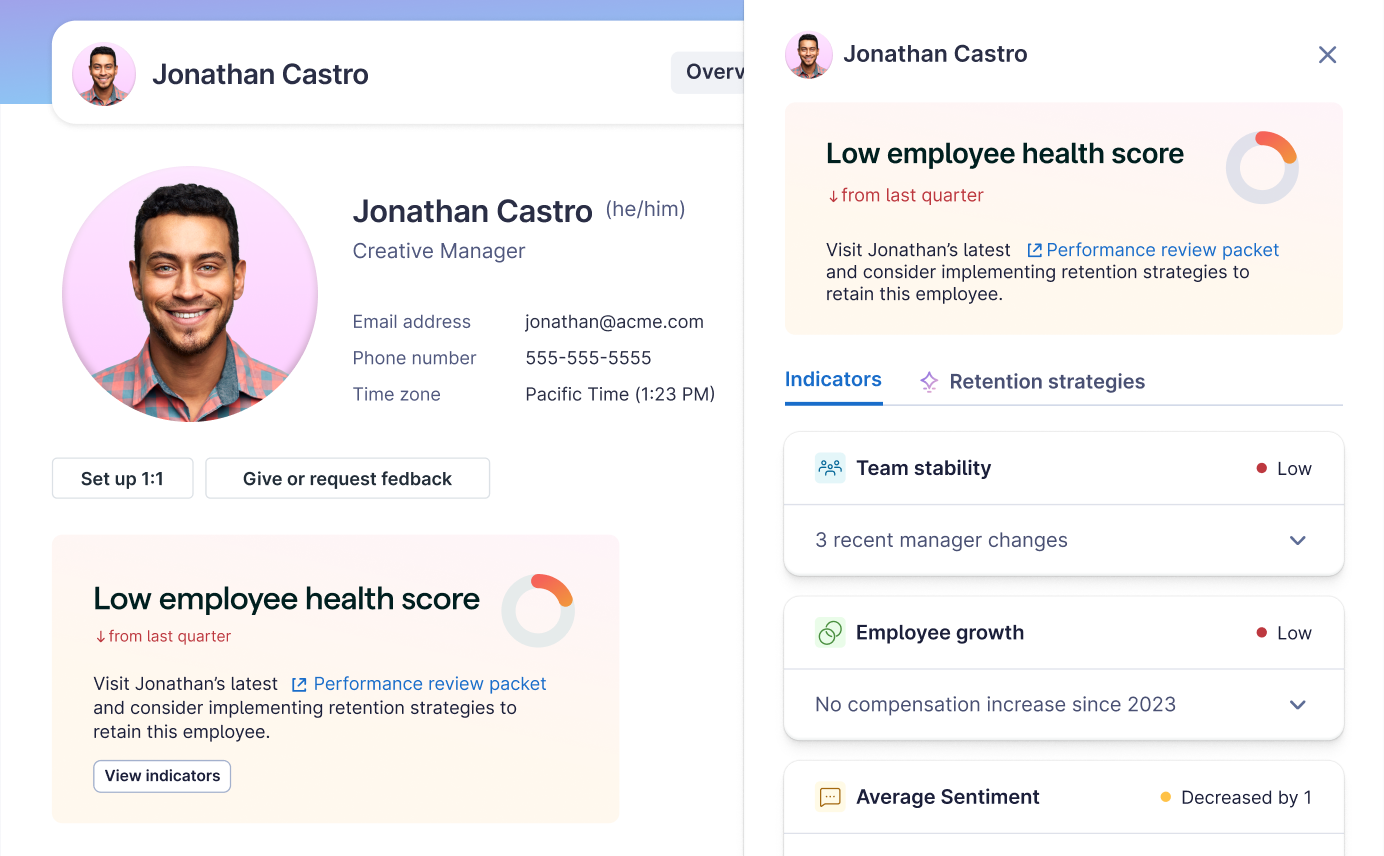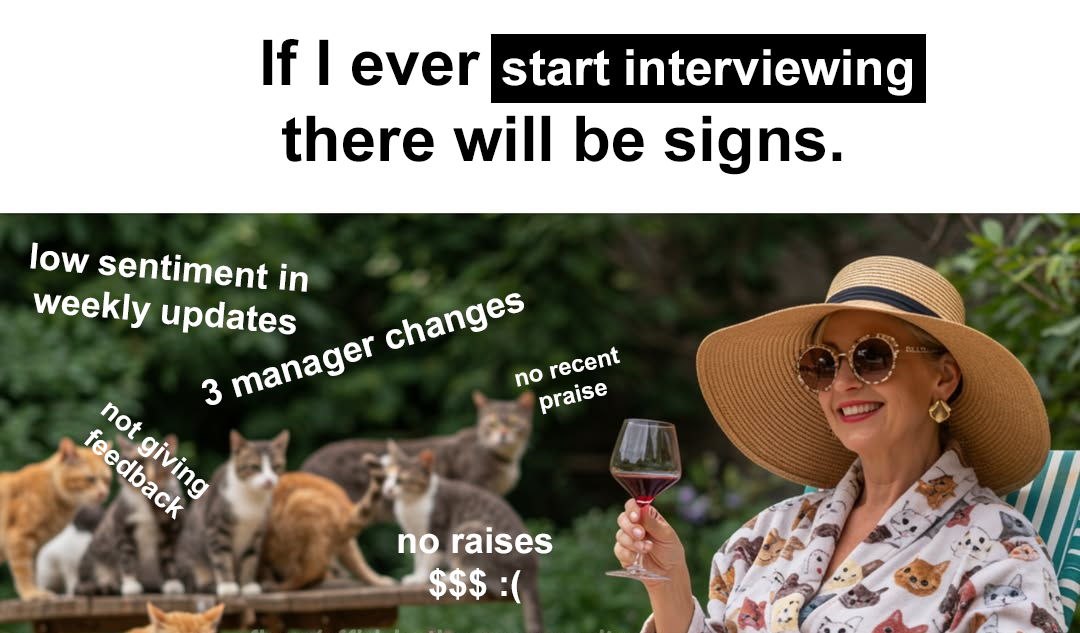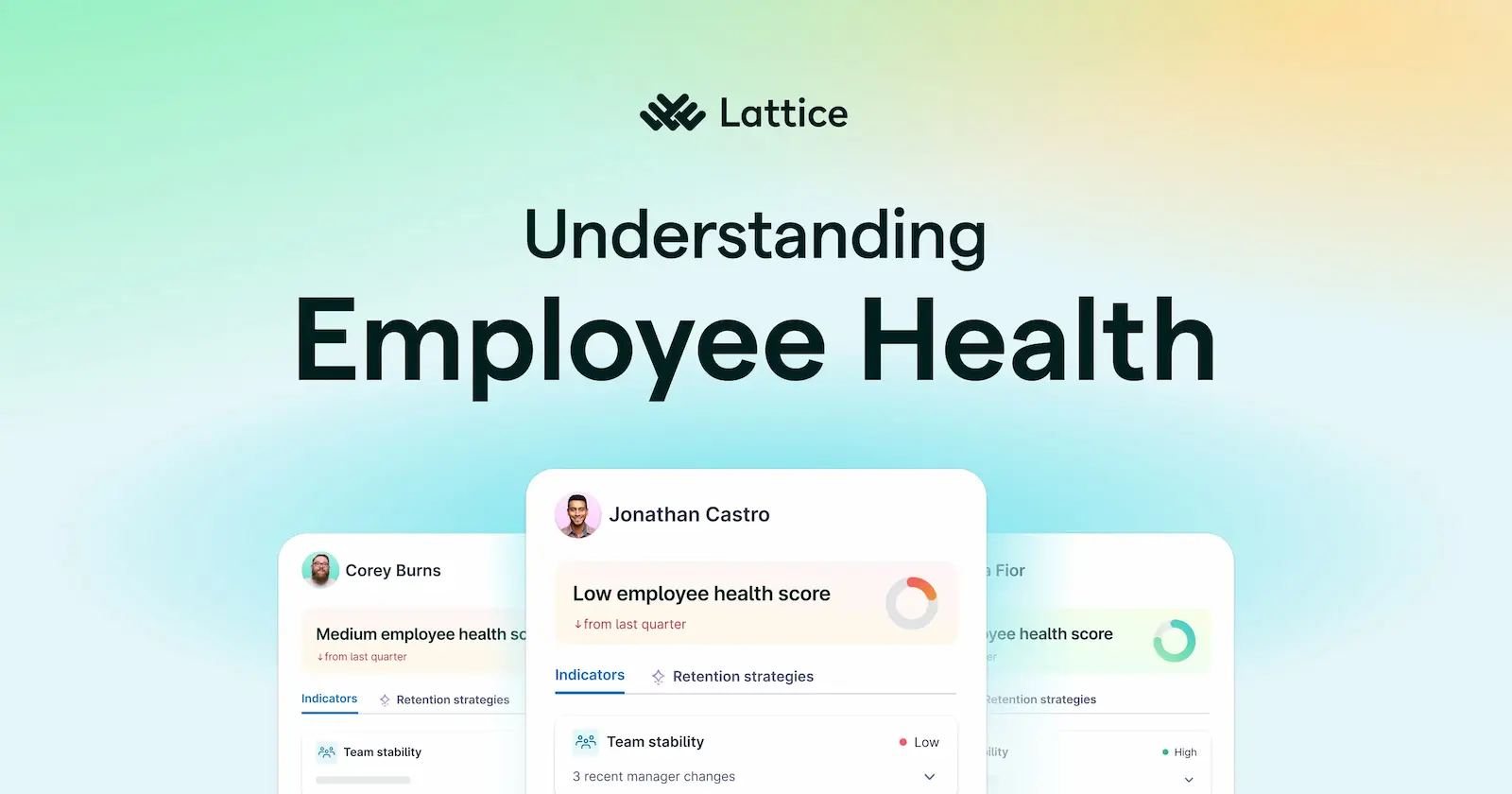You never saw it coming: One minute your all-star employee is all smiles, the next she’s scheduling a “quick sync” on your calendar. And just like that, poof — she’s gone. It’s not her, it’s you.
But there’s good news: Lattice’s Employee Health insights brings clarity, not confusion, to the complex (and heartbreaking) challenge of employee turnover. Built on predictive signal technology, the Health Score helps surface early indicators of disengagement so people leaders and managers can step in before it’s too late.
Unlike your buddy who “has a feeling” whenever people are interviewing, this feature isn’t based on vibes. Employee Health looks at real, objective criteria within Lattice to make an educated guess as to whether an employee might be a near-term flight risk. And we’re about to demystify how it works.
What informs Employee Health?
It’s no secret: Employee Health leverages patterns in how employees use Lattice over time. It doesn't rely on any sensitive personal information. Instead, it analyzes behaviors and trends that may correlate with disengagement. Specifically, the model looks at:
- Manager, title, and compensation changes, signaling stability and growth (or lack thereof)
- Tenure, or how long the employee has been with the company
- Feedback and praise activity, including the frequency of giving and receiving
- Sentiment from written updates
- Whether the employee is an individual contributor or a manager
And for those who might be wondering, Employee Health does not reference employee engagement survey responses. We’re committed to keeping those anonymous to preserve your employees’ trust and the psychological safety required for honest feedback.

How are these weighted?
Lattice’s Employee Health is powered by a statistical method called logistic regression.
Don’t let the name scare you off. In plain terms, logistic regression helps predict the probability of something happening based on multiple inputs. In this case, the likelihood of an employee leaving in the near future.
The model takes into account several behavioral signals, like feedback activity, role changes, and more, and assigns each a weight based on how strongly it’s been linked to past employee departures. It then combines those signals into a single score between 0 and 1, which is translated into High, Medium, or Low Health.
What’s a good score?
While the exact weightings are proprietary, we can share that feedback activity and update sentiment do carry significant influence, as we find these are strong indicators of employees’ day-to-day engagement.
The resulting Health Score estimates an employee's probability of leaving in the next month. Here’s how scores break down:
- High Health: Less than 1.5% likelihood of leaving
- Medium health: 1.5% to 2.5%
- Low health: Greater than 2.5%
Again, these are probabilistic signals and not predictions written in stone. But low scores aren’t a cause of panic, just like high scores aren’t a reason to disengage. Think of it like a weather forecast: The data doesn’t guarantee rain (or attrition), but it helps you decide whether to carry an umbrella.
What "Low Health" Actually Means
Seeing a low score can be alarming, but it shouldn't spark panic. Instead, think of it as a reminder to check in. A low score simply means the model has picked up signals historically correlated with disengagement. Simply, Employee Health offers an opportunity to listen, learn, and support.

Similarly, a high score doesn’t mean it’s time to take your foot off the gas. Engagement is dynamic, and context always matters. That’s particularly true for high-performing employees or your organization’s least “squeaky” wheels, who may be less likely to show signs of frustration or displeasure.
Employee Health is only rooted in data within the Lattice platform. It can’t account for economic and hiring slowdowns, surprise career pivots, or that once-in-a-lifetime job offer your high performer didn’t see coming. Employee Health should always be considered alongside other qualitative and quantitative measures, and regular one-on-ones can also add valuable color.
Two Employee Personas: A Tale of Two Scores
Persona 1: Alex (Low Health)
Alex has recently transitioned teams, hasn’t given or received praise in weeks, and their update sentiment has trended negative. Lattice flags Alex with a low Health Score. For their manager, this is a cue to have a candid conversation about workload, expectations, or possible misalignment.
Persona 2: Sofia (High Health)
Sofia frequently gives praise, shares updates with a positive tone, and has been with the company for three years under the same manager. Her Health Score is high, but that doesn’t mean she should be ignored. Instead, it’s a great opportunity for her manager to talk about growth, development, or stretch goals.
When should I use Employee Health Score?
The Health Score isn’t a standalone signal, it’s a tool for managers to use on an ongoing basis. HR leaders and managers should use it in tandem with what you already know about your team. It’s especially useful ahead of:
- Performance reviews
- Compensation cycles
- Succession planning
- Team restructuring
In other words: Use it when you're making decisions that impact people's paths.
Turn insights into action with Lattice.
Employee Health is just one piece of the performance and engagement puzzle. When combined with tools like Lattice 1:1s, Feedback, and Updates, it helps HR teams and managers support people before problems arise.
See how the full Lattice Platform helps build high-performing teams and creates workplaces where people want to stay and thrive.








